If you have a gardenia plant, chances are that you love the sweet-smelling flowers that it produces during the summertime. But in most regions, the winter weather can be dangerous for your gardenia. That’s why we’ve done the research to teach you how to overwinter your gardenia (both in pots and in-ground) so that you can protect it and keep it thriving for years to come.
Winter care for gardenias ultimately depends on where you live. If you live in a warmer climate and your gardenia is planted in the ground, usually you can simply cover it during really cold snaps. But if your gardenia is planted in a pot, you will need to bring it indoors during the winter months.
Gardenias are meant to be planted in warmer climates. If you live in such a climate, your gardenia will require very little maintenance during winter. But if you live in a colder climate, the chances of your gardenia surviving the winter are much lower, and you need to take a little extra care with it. In either case, we’ll tell you everything you need to know in this article.
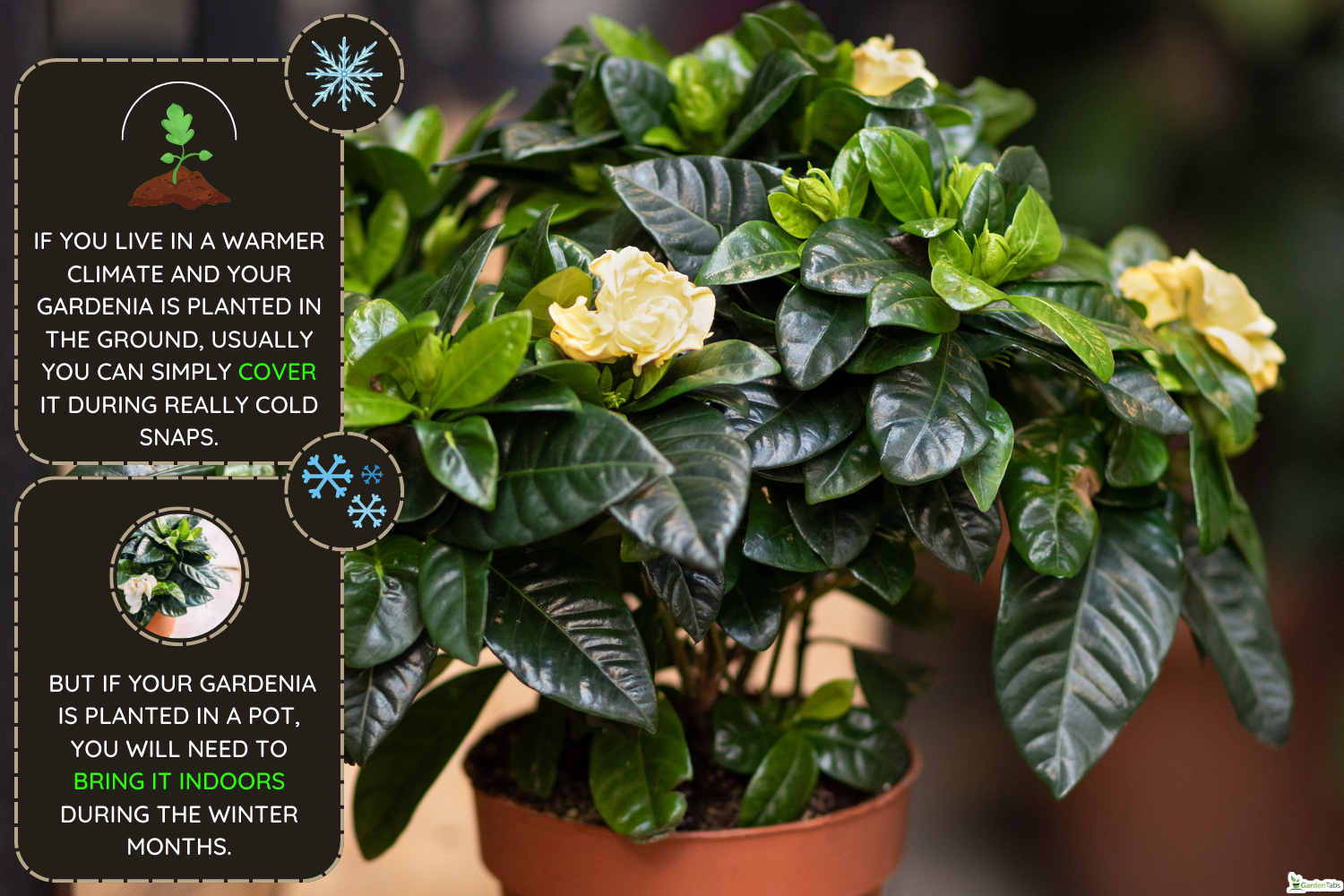
What Is The Lowest Temperature A Gardenia Can Handle?
Gardenias usually aren't capable of surviving temperatures that are 15 degrees Fahrenheit or lower. They are native to the subtropical regions of Africa, Asia, and Australia, which means that they thrive in warm climates.
Gardenias are meant to be grown in USDA plant hardiness zones 8-10, where it doesn't typically get below 15 degrees during the winter. When grown in these zones, they usually don't need to be overwintered except in the very rare event of a freeze. In that case, simply covering them up to protect them will suffice.
There are cold-hardy varieties of gardenias that can be grown in zone 7. However, the chances of freezing conditions for longer periods of time are higher in this zone. Gardenias can still survive the winter with proper care. But, they should be covered up whenever there is a chance of frost and freezing temperatures.
If you live in a plant hardiness zone that is lower than zone 7, or in other words, the winter temperatures get colder than 15 degrees on a regular basis, that doesn't mean that you can't grow gardenias. You will just need to plant them in a container. That way, you can bring them inside during winter to increase their chances of survival.
How To Overwinter In-Ground Gardenias
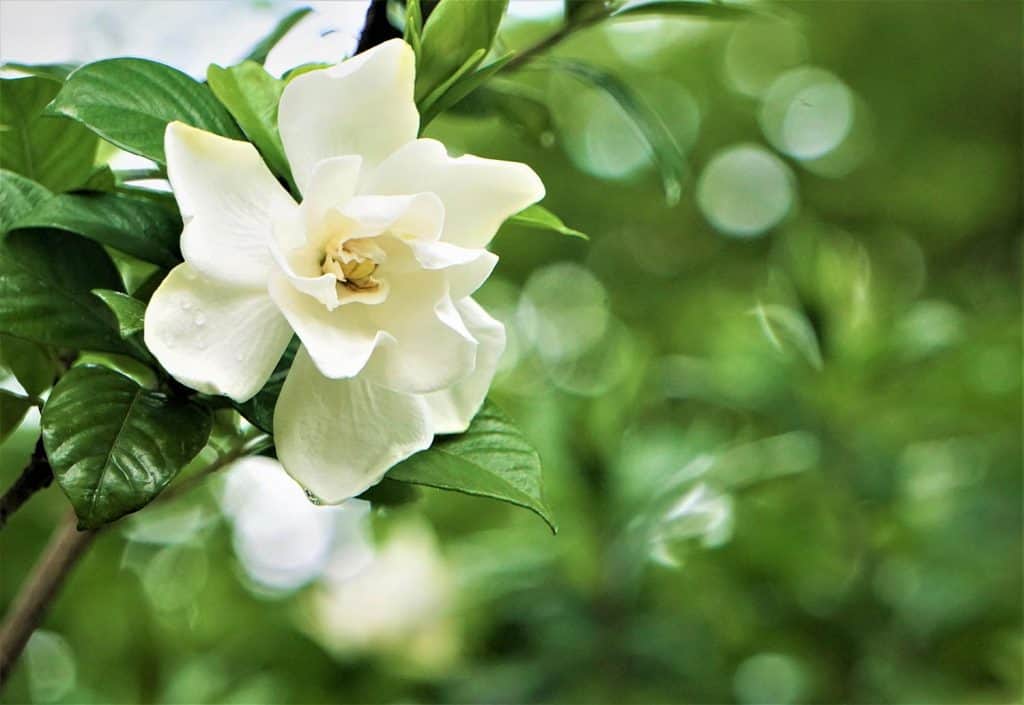
Remember that gardenias should only be planted in the ground if you live in zones 7-10. With that being said, protecting gardenias that are planted in the ground during winter is actually very easy. But it does require a little bit of advanced planning on your part.
Sunlight
The first step is to make sure that your gardenias are planted in the right location well before winter. Gardenias don't need long periods of sun exposure, as too much sun can cause the flowers to fade more quickly.
But they do need some sun in order to grow and flower to their full potential. A location where they receive partial sun (preferably morning sun) and partial shade is ideal. The right location will not only provide optimal growth, but it will actually help to keep them protected on cooler winter days by allowing them to stay warm.
This is particularly important for gardenias that are planted in zone 7. Zone 7 doesn't always receive a lot of snow, but it does experience several winter days in which the temperature drops into the 30 and sometimes 20-degree range.
While this temperature won't kill your gardenia, it can temporarily affect their growth. The more sunlight they receive, the better off your gardenia will be.
Frost Blanket
If a gardenia is planted in zones 8-10, it is very rarely exposed to frost. Even so, one night of frost generally isn't enough to kill a gardenia. However, in zone 7 where frost happens more often, it may be necessary to protect your gardenia with a frost blanket.
Frost blankets are exactly like they sound. They cover up vulnerable plants to protect them from frost. But while there are actual "frost blankets" available at any garden store, there are other things you can use as well to cover up your gardenia.
Cardboard boxes, tablecloths, or bed sheets are commonly used as frost blankets. However, the key is to secure the blanket so that it doesn't allow frost to reach the blankets. If you used a tablecloth or bedsheet, you may wish to place rocks on the corners to help secure it or find a way to pin it down.
Click here to see this frost blanket on Amazon.
Mulch
In addition to a frost blanket, it's a good idea to apply a fresh layer of mulch or straw around the base of the gardenia to help insulate the roots. At the very least, wrap some old blankets around the base of the plant to help keep it warm.
How To Overwinter Potted Gardenias
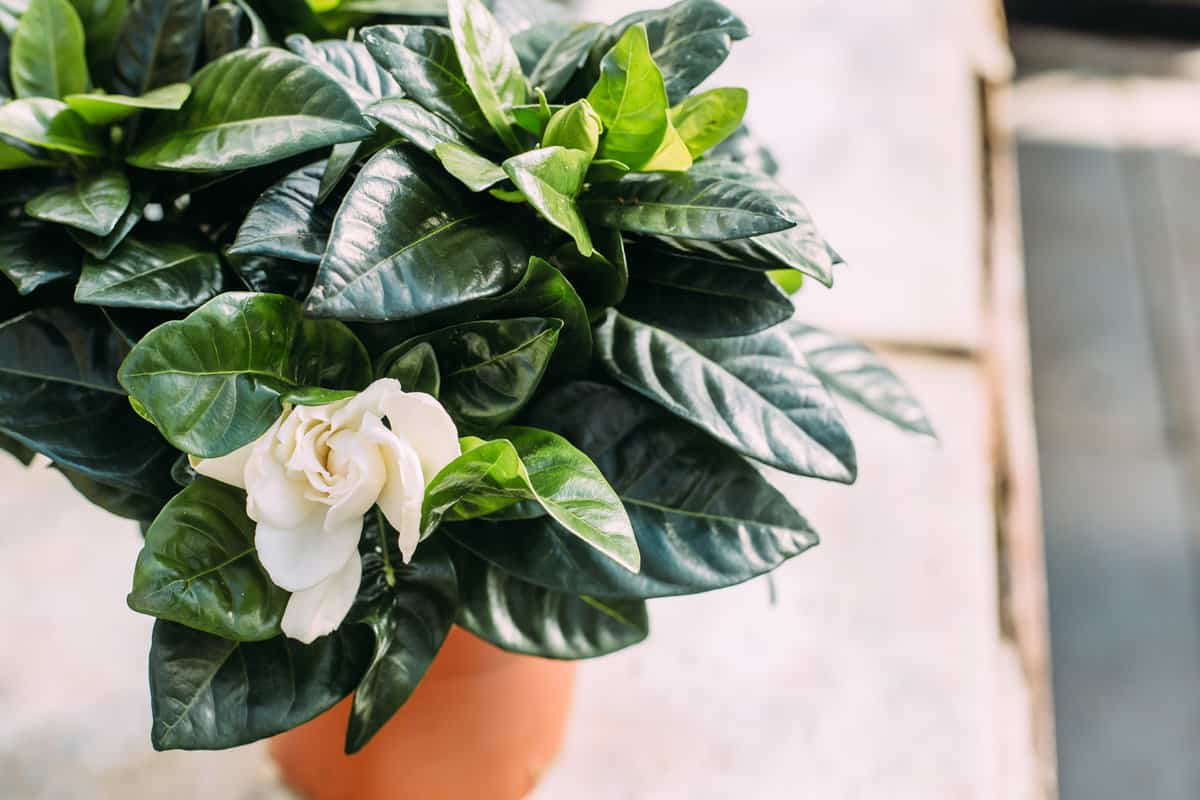
If you live in a climate that receives a lot of snow or experiences extended periods of time with freezing temperatures, it's best to grow gardenias in pots. That way, you can bring them inside during the winter. However, truly overwintering potted gardenias isn't as simple as just bringing them inside.
There are certain things you have to be sure to do both before bringing your gardenia inside and after. Just because you bring a gardenia indoors doesn't mean it will survive. Yes, it will be protected from freezing temperatures, but you still have to provide it with the optimal growing conditions since it won't go dormant during winter as outdoor gardenias do.
But don't worry, we're here to help you figure out what the optimal growing conditions are.
When Should You Bring A Potted Gardenia Inside?
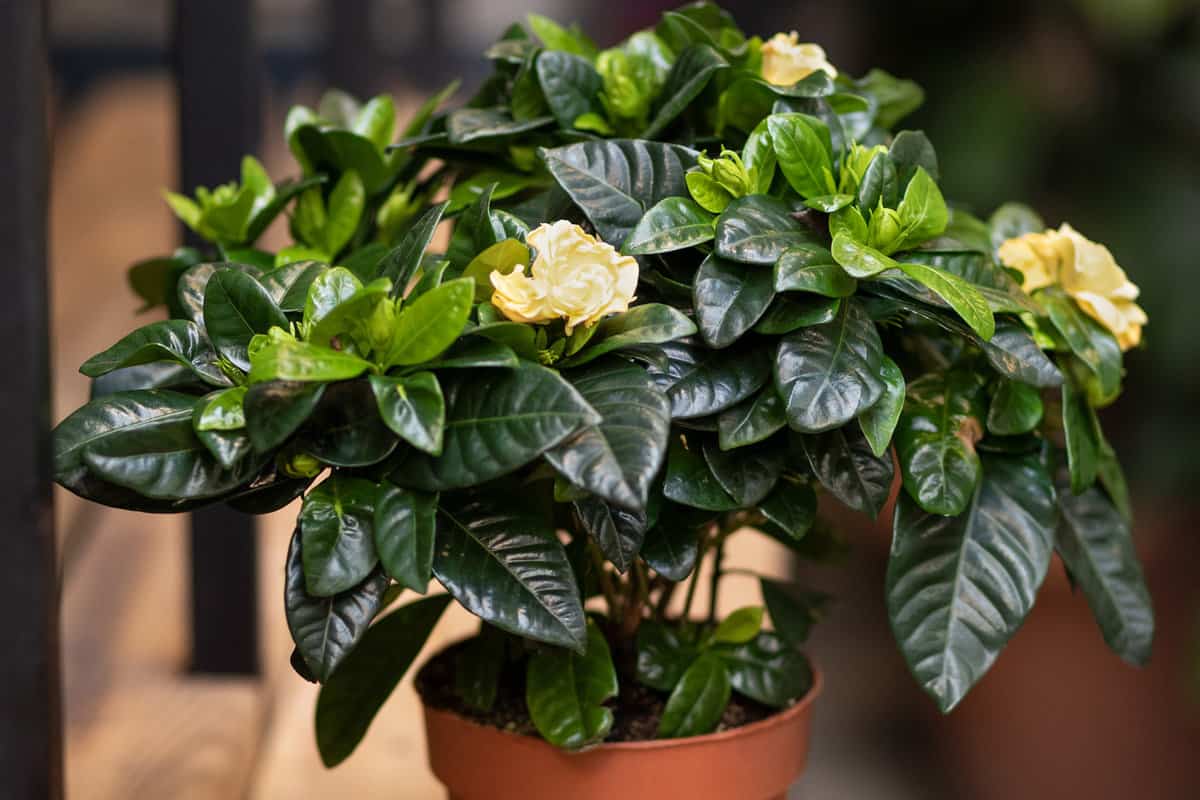
It's a good idea to go ahead and bring a potted gardenia inside once it has finished flowering so that you can get it acclimated to the indoor growing conditions. But at the very least, potted gardenias should be brought inside prior to the first instance of freezing temperatures. Here's what to do when bringing a gardenia inside.
Check For Pests
Inspect your gardenia for pests and disease, particularly spider mites which commonly affect gardenias, before bringing it inside. You don't want to risk spreading those pests or diseases to your other plants. If you do encounter any pests, spray them off with a strong hose blast and treat them with an insecticide, if necessary. Treat any diseases with a fungicide as well.
Find A Good Location
The best location to keep a gardenia indoors is a sunny, south-facing window. The plant should receive sunlight for at least half the day. If you don’t have a sunny window to put your gardenia in, you can also use an indoor grow light to provide it with the light that it needs.
Click here to see this indoor grow light for plants on Amazon.
Provide Plenty Of Water
Be sure that you don’t skimp on watering your gardenia when it is indoors. The general rule is to water it with the same frequency as you would if it were outdoors. But, you can monitor the moisture level in the soil to tell if it needs water. The soil should feel damp, so you should definitely water it if it feels dry to the touch.
Will Gardenias Survive A Hard Freeze?
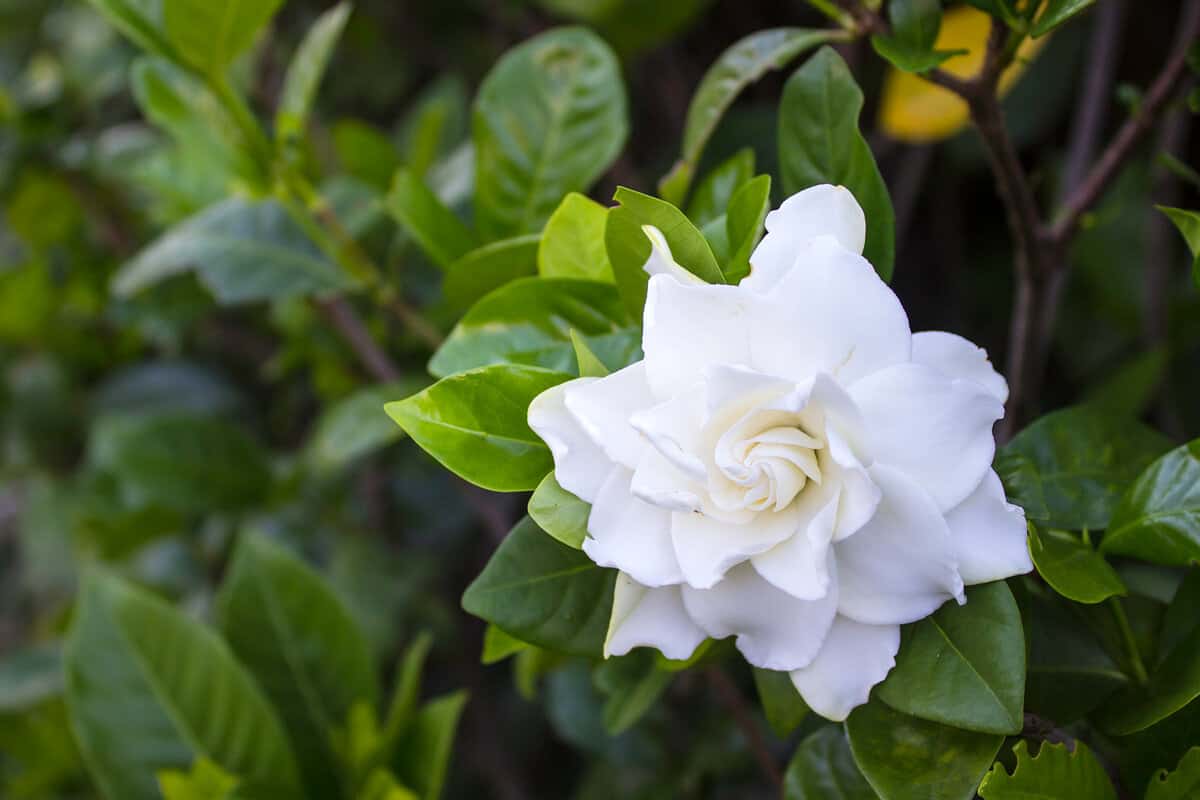
Usually, a light freeze isn't enough to kill a gardenia, but a hard freeze (especially with snow) will damage the foliage at the very least.
Sometimes, gardenias survive a hard freeze with minimal damage, but other times they don’t. It just depends on the extent of the freezing temperatures. Remember that gardenias usually don’t survive if the temperature reaches 15 degrees for an extended period of time.
Will A Gardenia Come Back After A Freeze?
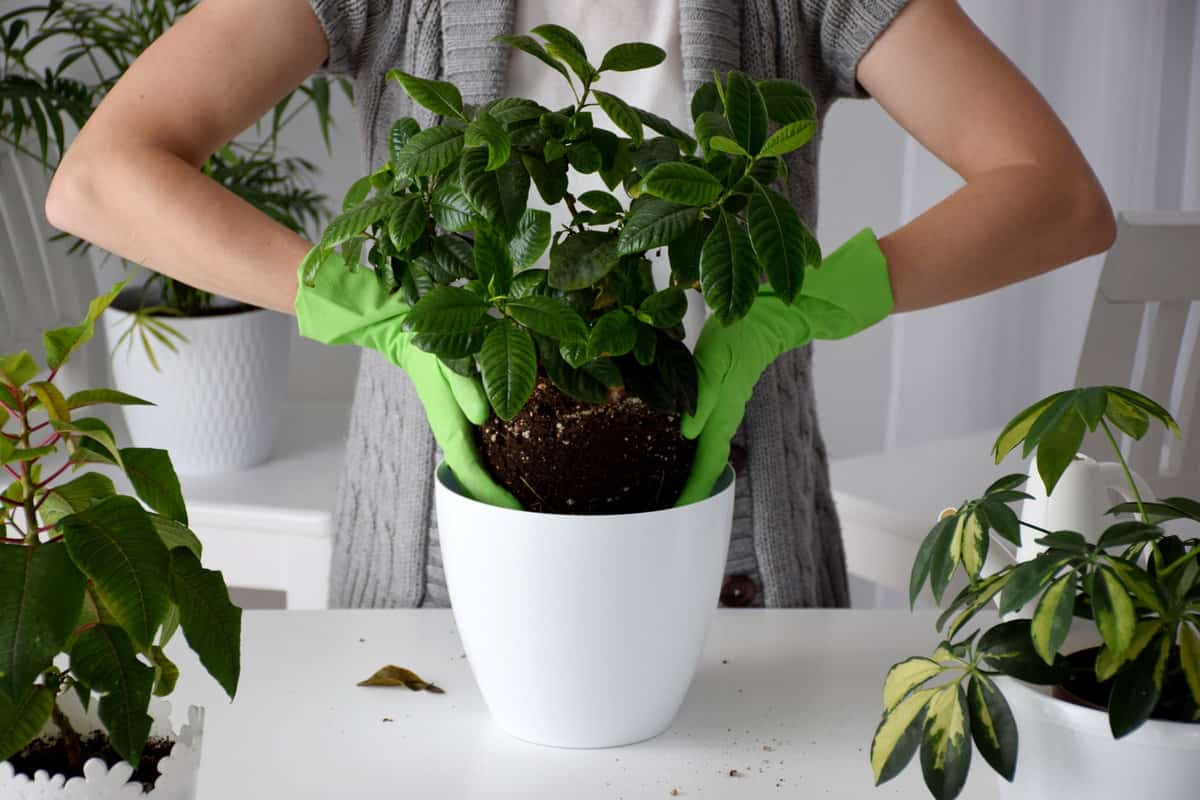
As long as it is grown in the right hardiness zones, most gardenias will come back after a freeze. However, there is no way to really know for sure until spring. Even with severe frost damage, they will likely recover and start to flower again in a year or two.
Even if your gardenia does become damaged due to frost, you shouldn’t try to repair it until spring. If spring rolls around and your gardenia hasn’t started to produce new growth, you can prune it back at that point to remove any damaged areas.
Should You Fertilize Gardenia In The Winter?
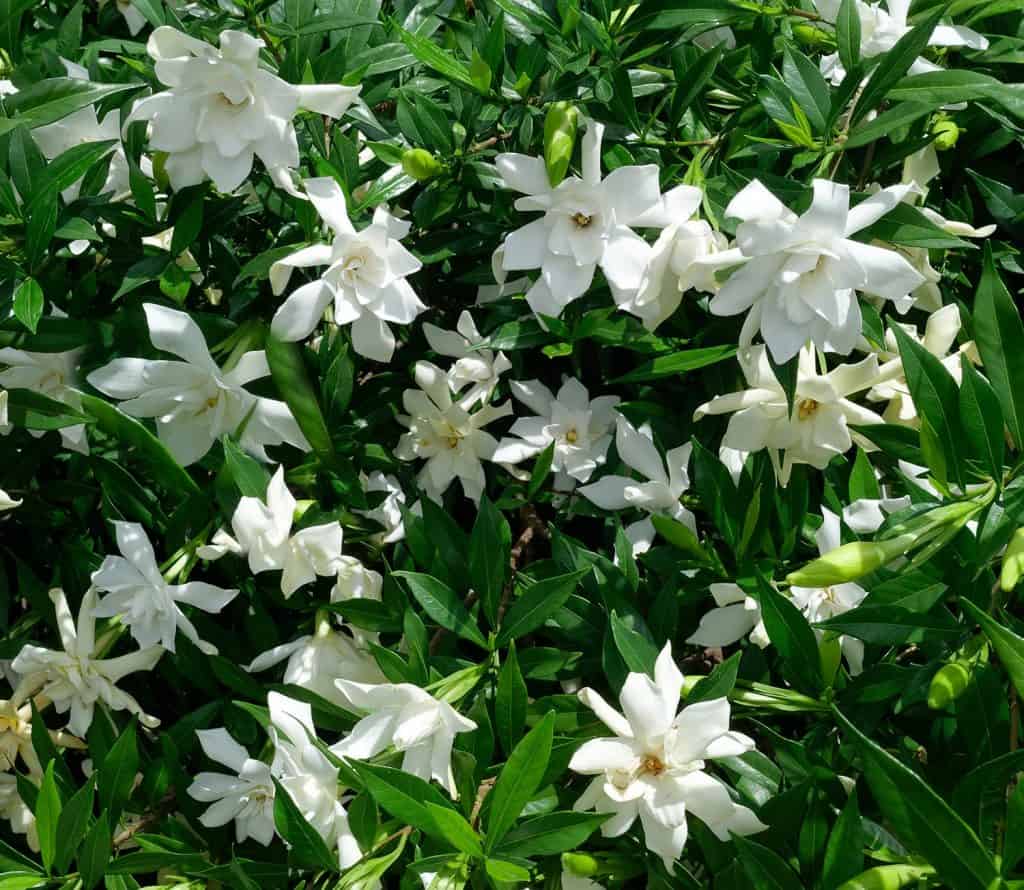
You do not need to fertilize a gardenia in the winter. You can begin fertilizing a gardenia again in the spring when the plant starts to show new growth.
In Closing
Gardenias are hardy plants that can survive the winter as long as they are grown in the right zone. If you live outside zones 7-10, it is necessary to plant your gardenia in a pot, that way you can bring it inside for the winter. Thanks for reading!
If you want to know how to overwinter other plants, check out the following:
How To Properly Overwinter Ferns [Inc. Potted]
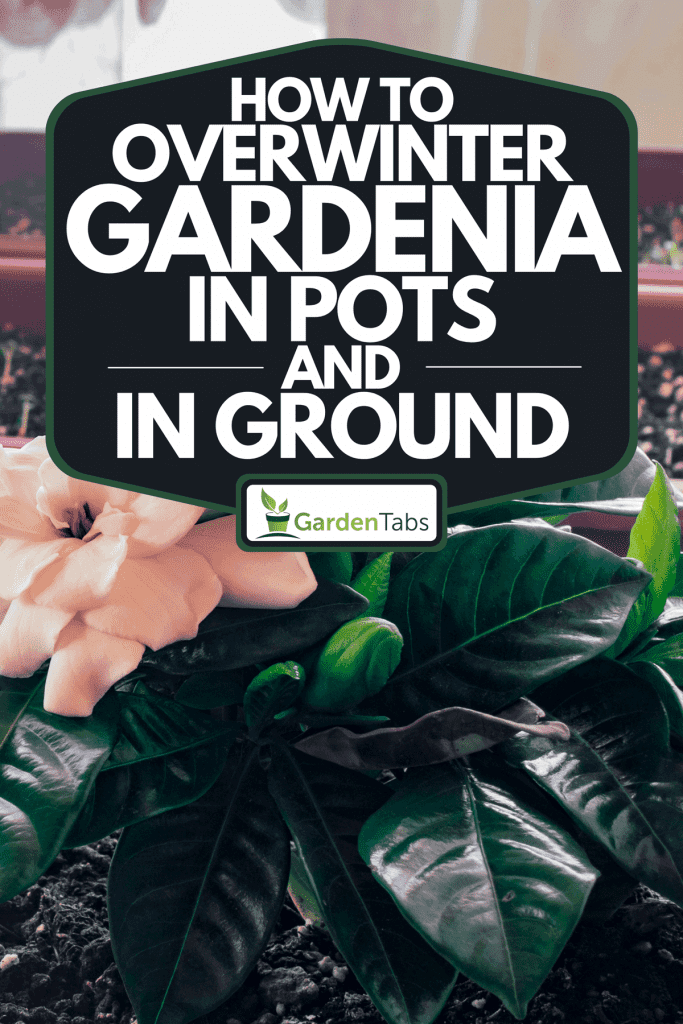



it is september 2022 my gardenia has been outside since march ( i live in zones 5-6 ( New York State) it lost all its flower buds earlier in the year now it has started with a lot of new growth should I bring it in the house or leave it until the first frost it is protected right now.
The article LITERALLY says “If you live outside zones 7-10, it is necessary to plant your gardenia in a pot, that way you can bring it inside for the winter”. Why do people not know how to read?
Thank you for the information. I have had several gardenias and live in Ohio. The zone here is 6A. In winter I bring it inside a small greenhouse, but it still has always gotten brown leaves and died. Two years ago I got a butterfly gardenia plant which has the same strong fragrance but the flower is a little different. It’s been three years and the plant is still great. Maybe I’ll try another gardenia after reading this article. Thank you.